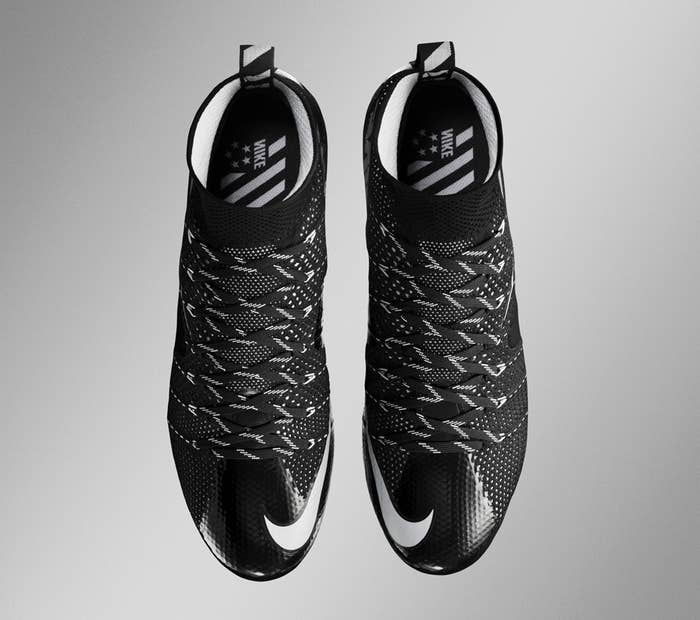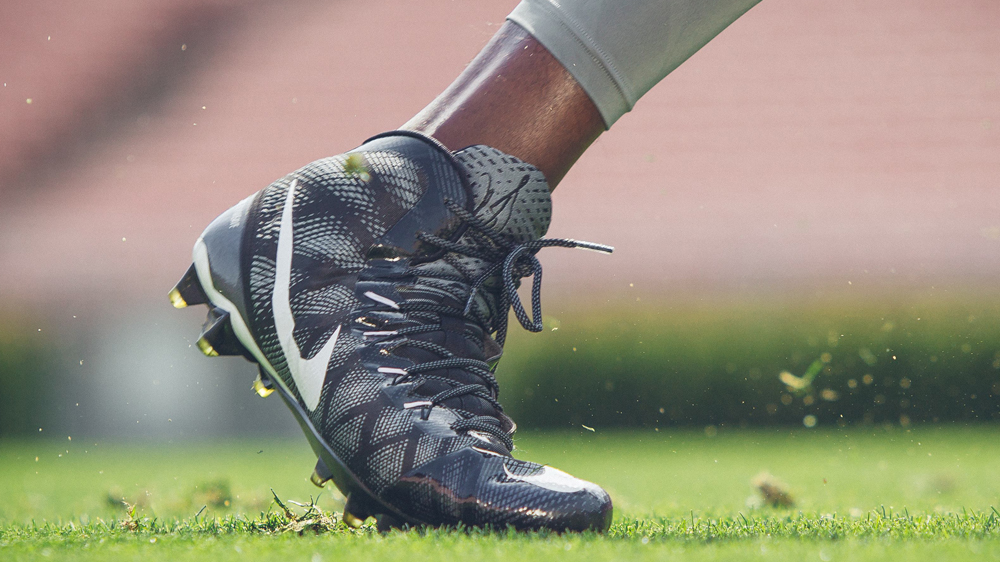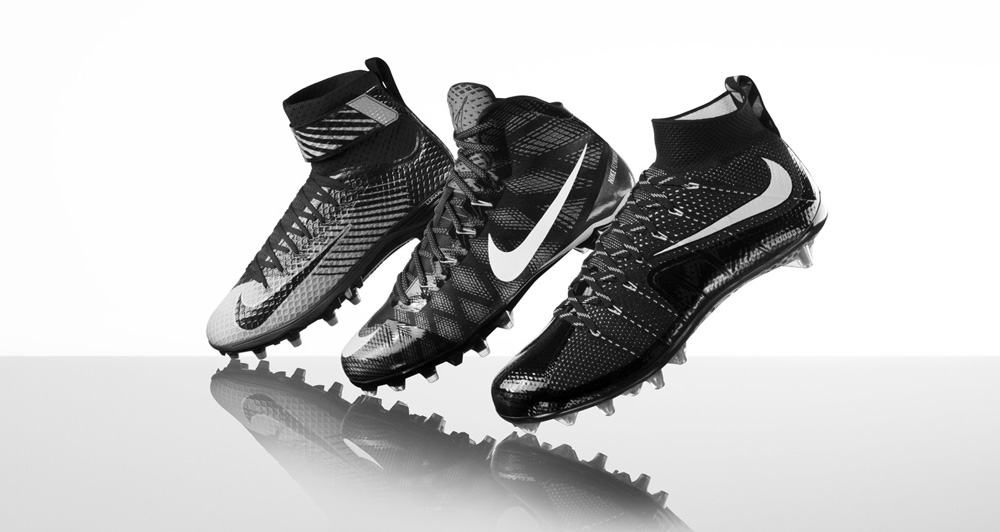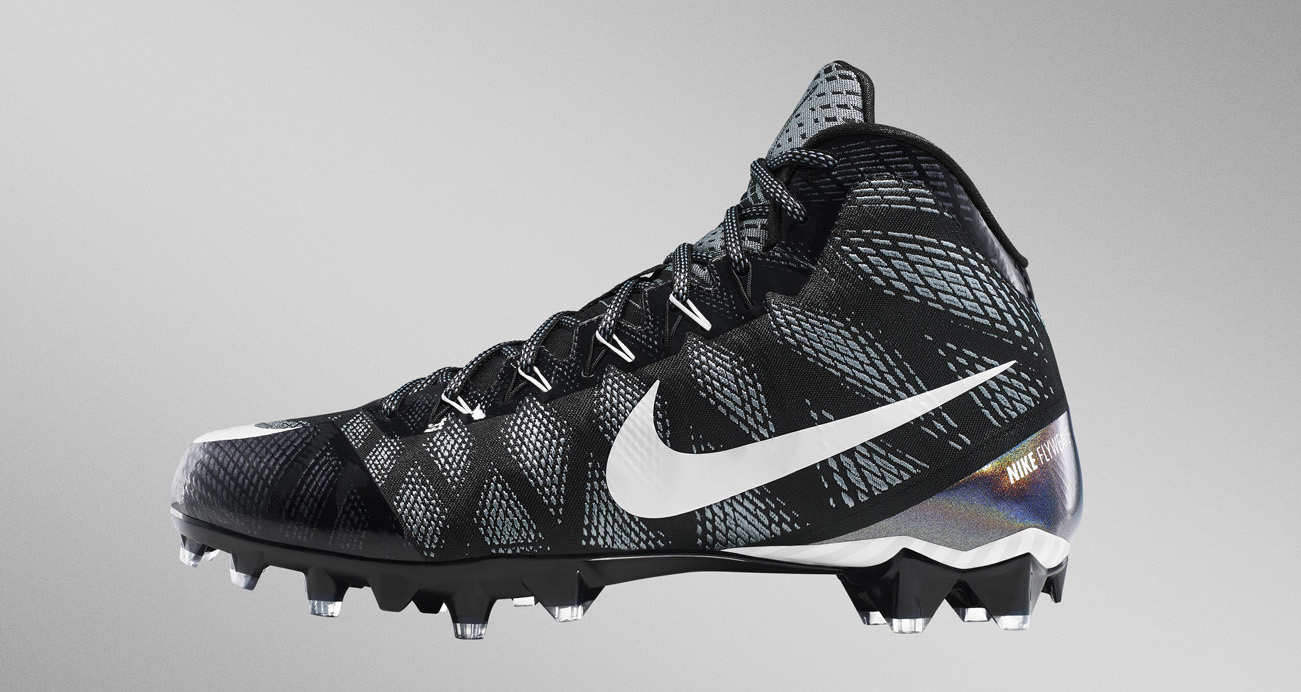1.

by Brendan Dunne
Nike wants to change the way it approaches football footwear.
The sportswear giant is no stranger to the category. Its football design heritage can be traced all the way back to 1971, but it's changing things up to mirror how it makes shoes for the other football field. Much like it did in soccer, Nike is segmenting its football cleats into three different silos to suit the different styles of play of the game’s different positions.
"It’s about providing a level of service that a signature athlete wants," said Nike's cleated design director for football Ken Link. "If we do that, and then deliver that back to the consumer—that’s a level of service that nobody else can deliver."
Prior to working on football cleats, Link was known for his early work on the Nike LeBron line. Now instead of working with one of the NBA's premiere athletes, he's working with one of the NFL's in Detroit Lion Calvin Johnson Jr., who was one of the first players to put the prototypes to the test.
2.

“In many ways working with Calvin, it’s like LeBron on the football field,” Link said. “He’s incredibly strong, he’s 6’5, he runs a 4.35 40 [yard dash], which is amazing. He has a 43 inch vertical. I love those kind of extremes that represent what the game is and what an athlete wants and needs in their cleats. That’s what I loved about LeBron. He was an outlier.”
But not all football players have the build or physical capabilities of a Calvin Johnson Jr. And Nike’s aim with this new siloed approach was to understand what different football athletes need to achieve on the field and create the footwear best suited for their specific style of movements.
Link explained this process as figuring out the needs of players at varying positions on the field. “Rob Gronkowski has very different size and needs than a Richard Sherman or a Marcus Mariota,” Link said. “The differences in body type and playing style are so extreme. The defensive end’s needs are way different than a defensive back’s needs. It all comes down to position and body type.”
These types are broken into three different categories under the new system: Nike Vapor Speed, Nike Alpha Speed, and Nike Strike Speed.
Nike Vapor Speed is represented by the Nike Vapor Untouchable Cleat, a model that made its debut on a grand stage of sport in the first-ever College Football Playoff. Vapor Speed focuses on explosive vertical movements, and caters to players like Richard Sherman and Marcus Mariota. Nike Alpha Speed is represented by the brand new Nike CJ Elite TD Cleat, the latest in signature shoes for Calvin Johnson Jr., which serves the hybrid athlete with a package of strength, support, and durability. Nike Strike Speed caters to the battles waged on the line of scrimmage with the Nike LunarBeast Elite TD Cleat, a model created with insight from defensive tackle Ndamukong Suh.
3.
Since Nike is catering to three different styles of play, it’s only right that the brand look to different technologies for each of the cleats. “We have different dimensions of speed for each silo, and we had innovation for each silo that helped deliver that speed,” Ken Link explained.
So where Flyknit was the more appropriate choice for the Vapor Untouchable Cleat, Flyweave was used for the CJ Elite TD Cleat, which will be worn by players looking for more support in their footwear.
The line between Flyknit and Flyweave has been sort blurry in the past, but the differences in these two models helps clarify things. Flyweave allows for more structure, which in this case was taken advantage of with Flywire cables woven in that work in concert with the material.
Link shed some light on the differences between these two proprietary Nike innovations. “You take Flyweave, it has a lot of the same properties as Flyknit,” Link said, “But at the same time we’re able to weave in a structure that allows us to create that much more strength. The cool thing about each one is that we’re able to use them to achieve a micro level of tuning for the athlete.”
4.

That Flyweave, still a relatively young tech for Nike, is already making the jump to football after being debuted in the Air Jordan XX9 and Nike TW15 shows how focused Nike is on advancing its cleat offerings.
3D printing also played a role the design and sampling process.
“Now, we can build something in 3D, build it in a matter of hours, and be able to test it the next day," Link said of using 3D printing when prototyping samples. "This is only the beginning. It allows us to see things more in the future.”
5.

Link likens working on the football cleats to “designing an F1 car for the field.” This focus on the field is heavy for Nike Football. As a result of the cleated designs, the category naturally has less lifestyle potential. While Nike Soccer has made big moves in the Nike Sportswear space recently, it doesn’t appear that this wave of Nike Football offerings will follow suit.
“We feel like we live in the field,” Link said, noting that there is a trainer version of the Nike CJ Elite TD Cleat coming for those not necessarily stepping onto the gridiron. “We feel like there are so many different things to do on-field that, off-field we’re not really getting into that.”
6.

7.

8.

9.

The Nike CJ Elite TD, Nike Vapor Untouchable, and Nike LunarBeast Elite TD launch globally today, April 28.

